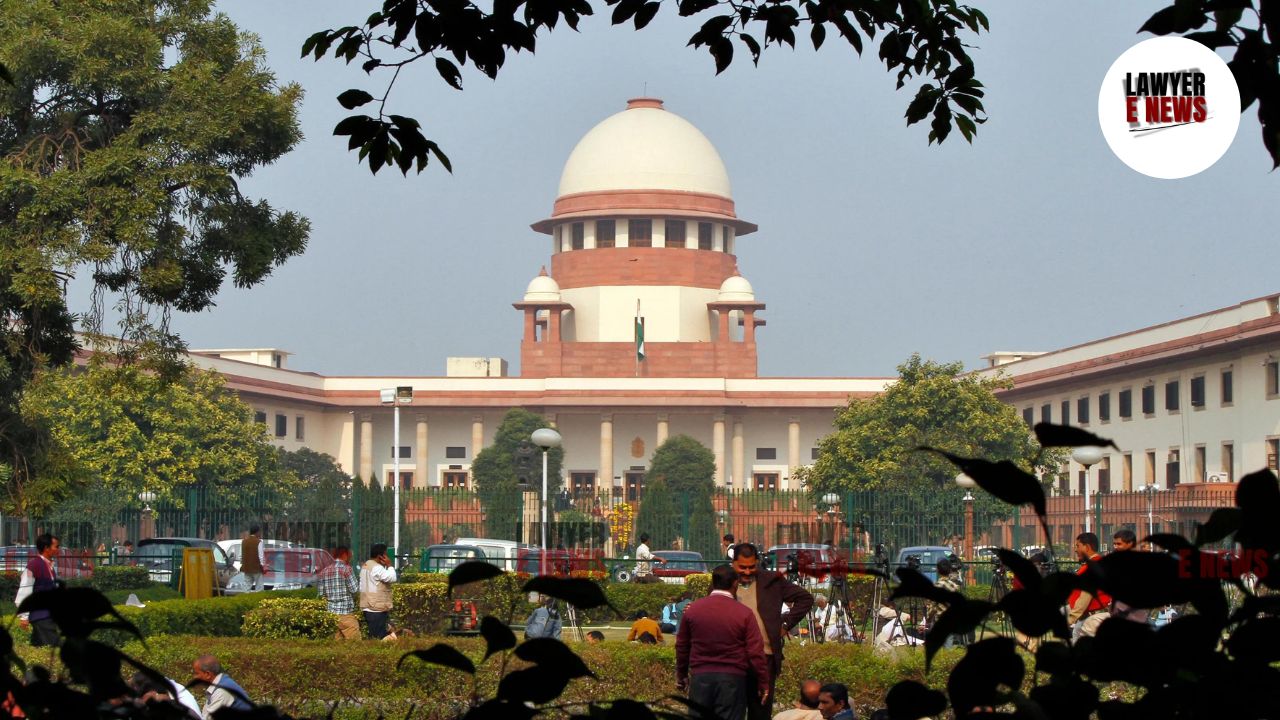-
by Admin
17 December 2025 8:55 AM



Throttling Suspected – Intent to Kill Can Be Inferred Despite Minor Injuries, Holds Supreme Court. Supreme Court of India delivered a notable judgment in Shoyeb Raja v. State of Madhya Pradesh, overturning a Madhya Pradesh High Court decision that had dismissed charges under Section 307 of the Indian Penal Code (IPC) based on the minor nature of injuries. The Court emphasized that even in cases where injuries are minor, the intent to kill is the key factor when determining whether Section 307 IPC (Attempt to Murder) applies. The decision reinstates the charges of attempted murder against the accused and directs the trial to proceed with charges under Section 307 IPC.
The case arose from a dispute over the District Waqf Board in Seoni, Madhya Pradesh. The appellant, Shoyeb Raja, was serving as the Chairman of the Board when tensions escalated between him and the previous committee members. On March 7, 2018, the appellant was physically assaulted and rendered unconscious. He was subsequently treated at the District Hospital, Seoni, before being referred to Asian Hospital, Nagpur.
Following the attack, an FIR was lodged under Sections 294 (obscene acts), 323 (voluntarily causing hurt), 506 (criminal intimidation) read with Section 34 (acts done by several persons with common intention) of the IPC. Later, the Additional Sessions Judge of Seoni framed charges under Section 307 IPC (Attempt to Murder), considering the severity of the assault. However, the High Court of Madhya Pradesh set aside the charges under Section 307, reasoning that the injuries sustained by the appellant were not severe enough to constitute an attempt to murder.
The appellant challenged the High Court’s ruling before the Supreme Court, arguing that the nature of the injuries did not preclude the framing of charges under Section 307, as the intent to kill was clear.
At the center of the appeal was the question of whether the seriousness of injuries alone should determine the framing of charges under Section 307 IPC, which deals with attempted murder. The Supreme Court addressed several key legal points in reaching its decision:
Section 307 IPC criminalizes attempts to commit murder. It requires proof of intent to kill, or knowledge that the act committed was likely to cause death. The High Court had ruled that since the injuries were not life-threatening, charges under Section 307 IPC were unjustified.
The Supreme Court, however, held that the severity of injuries is not the determining factor when framing charges under Section 307 IPC. The Court reiterated the established principle that “even minor injuries, if inflicted with intent to kill, are sufficient to frame charges under Section 307 IPC” [Para 12-14]. The Court also referred to Om Prakash v. State of Punjab (1961), which ruled that even if the injuries do not directly lead to death, the act can still amount to attempted murder if there was an intent to kill.
The medical evidence played a critical role in this case. The appellant's medical report, issued by Dr. Praveen Thakur, noted bruises on the appellant's upper lip, nose, and throat. More importantly, the report suggested that throttling was suspected, which could have led to respiratory arrest and, potentially, death.
The High Court had dismissed this report, stating that the injuries were minor and unlikely to cause death. The Supreme Court disagreed, observing that “intent may not always be proved by hard evidence and instead may be required to be inferred from the facts and circumstances of the case” [Para 13]. The Court emphasized that the possibility of respiratory arrest, as mentioned in the medical report, was enough to infer an intent to kill. The Court held that the High Court erred in dismissing the medical report at the charge-framing stage, especially when the doctor was not cross-examined to clarify the nature of the injuries.
The case involved eight accused, which triggered the application of Section 34 IPC, dealing with criminal acts committed by several persons with a common intention. The High Court had not thoroughly examined this aspect. The Supreme Court, however, highlighted that common intention can be inferred from the actions of the accused and does not need to be pre-planned.
The Court cited Chhota Ahirwar v. State of M.P. (2021), which held that common intention “can be developed on the spot,” and the accused could still be held jointly liable even if there was no prior agreement. The Supreme Court concluded that the accused acted with a shared purpose in the assault, making Section 34 applicable.
The Court emphasized that the seriousness of the injuries should not be the sole criterion for deciding whether to frame charges under Section 307 IPC. Referring to Hari Mohan Mandal v. State of Jharkhand (2004), the Court stated, “It is not essential that bodily injury capable of causing death should have been inflicted” if the intent to kill is present [Para 11.3]. Even simple injuries could lead to charges of attempted murder if inflicted with a clear intent to kill.
The medical report, which indicated that throttling could have caused respiratory arrest, played a crucial role in the Court's decision. The Supreme Court held that the High Court had prematurely dismissed this evidence, noting that "the extent of injuries are not relevant, if the intent is present" [Para 13]. The doctor’s suspicion of throttling and potential respiratory arrest justified framing charges under Section 307 IPC.
The involvement of multiple accused and their coordinated actions during the attack on the appellant led the Court to invoke Section 34 IPC. The Court noted that common intention could develop spontaneously, and all accused could be held equally liable for the assault. The Court referred to Krishnamurthy v. State of Karnataka (2019) to underscore that common intention does not require a prearranged plan and can be formed just moments before the act is carried out [Para 11.5].
The Supreme Court allowed the appeal, setting aside the High Court’s judgment and directing the trial court to proceed with charges under Section 307 IPC, alongside the other charges initially framed. The Court emphasized that the medical evidence suggesting throttling, combined with the intent to kill, was sufficient to frame charges under Section 307. The Court also directed that the trial be expedited, and the accused face trial for all offenses, including attempted murder.
This ruling reinforces the principle that intent to kill, rather than the severity of injuries, is the critical factor in framing charges under Section 307 IPC. The case will now return to the trial court, where the accused will face charges under Section 307 IPC, along with other applicable sections of the Indian Penal Code.
Date of Decision: September 25, 2024
Shoyeb Raja v. State of Madhya Pradesh & Ors.
